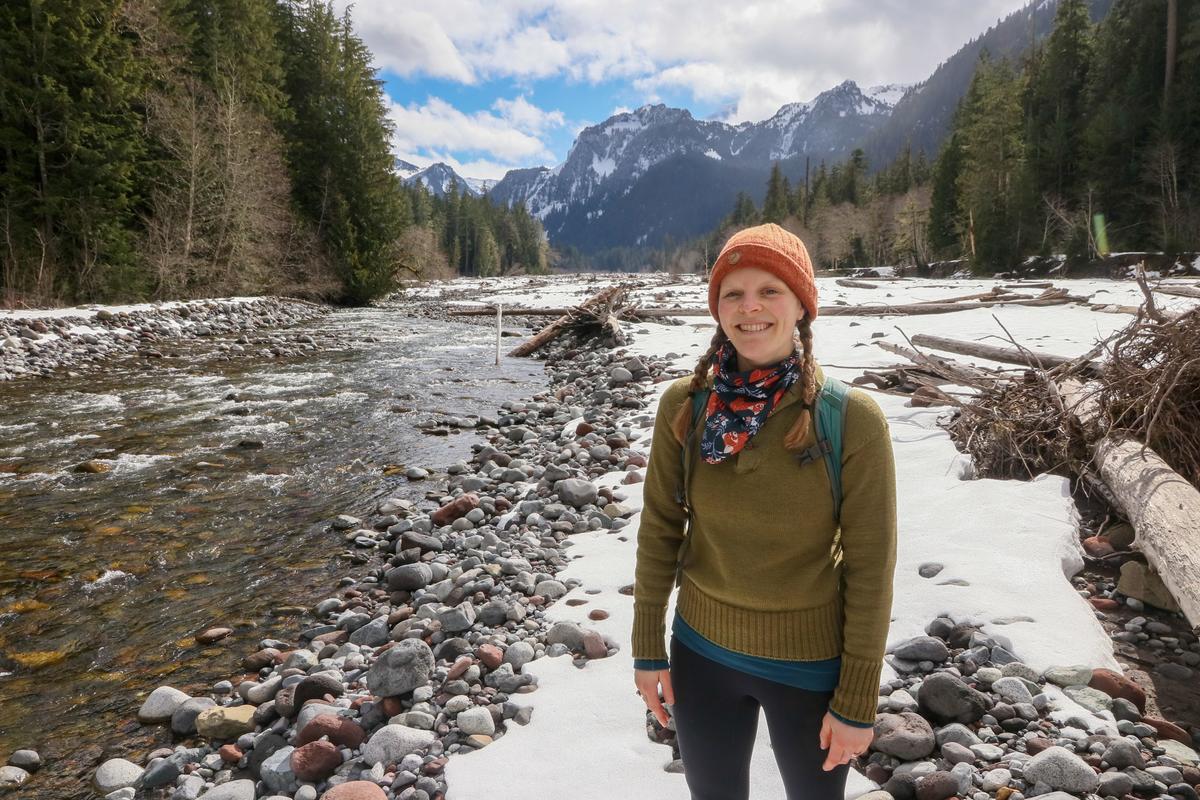No surprise that a woman who left her teen years becoming a wilderness ranger in Minnesota’s Boundary Waters Canoe Area is on a career path involving the great outdoors.
And that’s what NRRI Wildlife Biologist Anna Mangan has built for herself. From Northern Alaska, studying nearshore oil drilling impacts on loons, to Mt. Rainier National Park, focusing on American pika and Northern spotted owl… getting out there and into it was her theme.
“And I got my hands dirty with habitat restoration as a crew leader for the Washington Conservation Corps in the Nisqually River delta,” said Mangan. “But after all that gallivanting, I decided it was time to be closer to family and moved back to Minnesota.”
She got her bachelor’s degree from Northland College in 2008 and a master’s degree in Wildlife Science from Oregon State University in 2018.
Next Up: NRRI
Mangan joined the NRRI wildlife team as a technician in the Avian Ecology Lab for the summer 2022 field season conducting songbird point counts in Northern Minnesota. Then the Mammal Ecology Lab hired her as a Wildlife Ecologist in November last year.
She’s currently leading a multi-faceted project studying the growing spatial overlap of Northern and Southern flying squirrels, as climate change impacts where they live. The project aims to better understand the areas where the squirrels overlap in Minnesota, types of habitats each species relies on, and prevalence of a harmful parasite that the southern species carries that is detrimental to the northern species.
“There has been limited research in these species’ movements and what it may mean for Northern flying squirrel populations,” Mangan said. “Answering these questions will help resource managers understand how to best manage the squirrels' habitat requirements and provide better information about their conservation status.”
The methods developed in this research for monitoring flying squirrels could be used to continue studying possible changes in habitat selection and distribution of squirrels. Future monitoring will be especially important as our climate and forests continue to change, and this study will help guide those future efforts.
Field Fun
Growing up, Mangan spent a lot of time outdoors with her family, but her biologist field work still provides surprises. She gets to see fresh wolf tracks in the snow, feisty animals in live-traps, or a flock of snow bunting.
“Getting a solid footing in the wildlife field is not easy, but thanks to a lot of great mentors along the way, I made it work and I’m so glad I did,” she said. “Especially getting to work outdoors during the winter, one of my favorite times of the year.”
U Connections
Mangan uses her wildlife research experiences to share and mentor undergraduate and graduate students looking to break into this field.
“I always enjoy providing experiential learning in the wildlife sciences to anyone who has an interest,” she added.
Off Hours
Also no surprise that after a day of work in the woods, she finds herself back outdoors hiking, agate picking or even reading.
“And even though I will miss the fresh veggies from my garden, I am excited for the cross-country ski season to start!” Mangan enthused.
